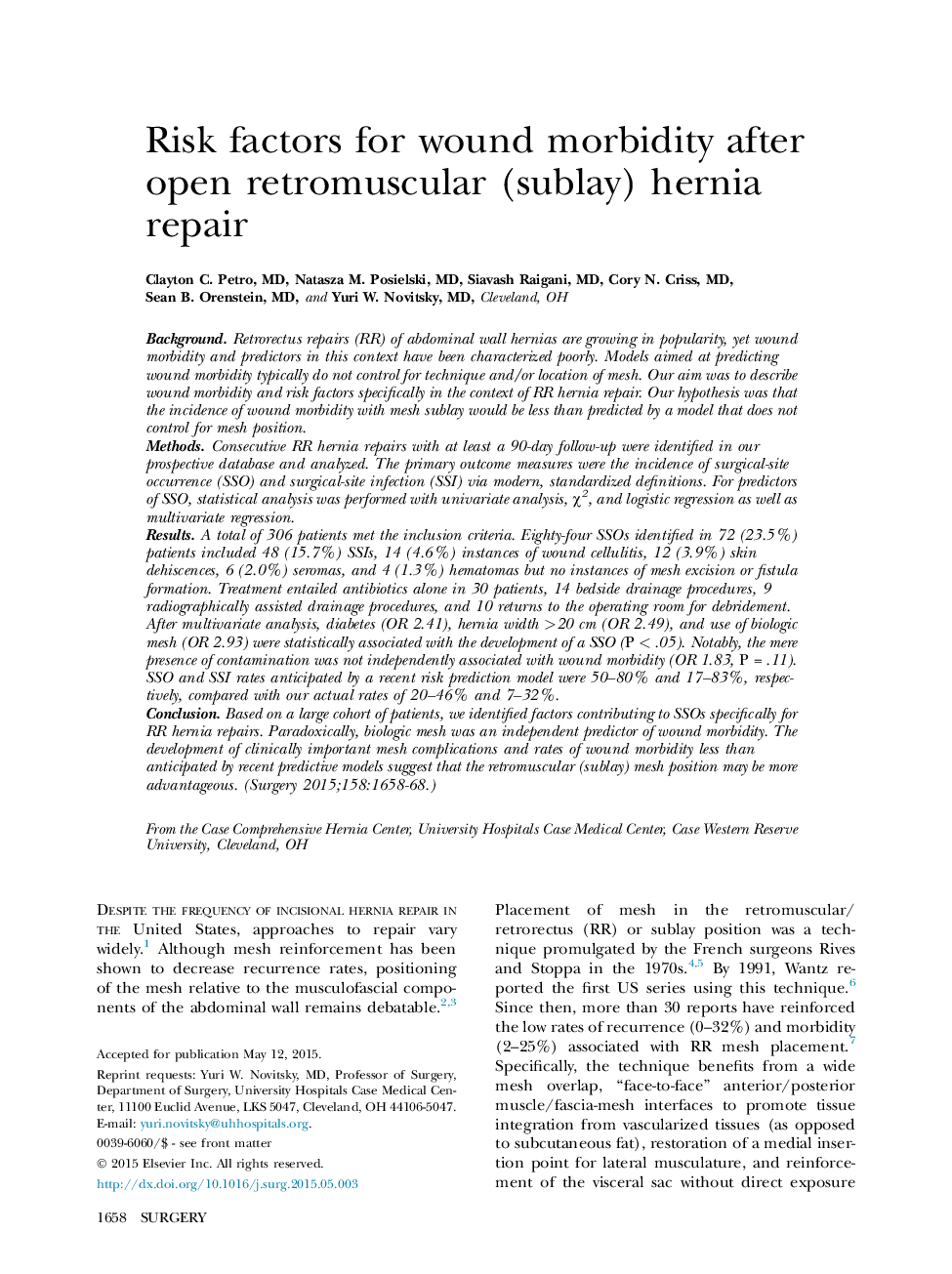| کد مقاله | کد نشریه | سال انتشار | مقاله انگلیسی | نسخه تمام متن |
|---|---|---|---|---|
| 4306422 | 1289219 | 2015 | 11 صفحه PDF | دانلود رایگان |
BackgroundRetrorectus repairs (RR) of abdominal wall hernias are growing in popularity, yet wound morbidity and predictors in this context have been characterized poorly. Models aimed at predicting wound morbidity typically do not control for technique and/or location of mesh. Our aim was to describe wound morbidity and risk factors specifically in the context of RR hernia repair. Our hypothesis was that the incidence of wound morbidity with mesh sublay would be less than predicted by a model that does not control for mesh position.MethodsConsecutive RR hernia repairs with at least a 90-day follow-up were identified in our prospective database and analyzed. The primary outcome measures were the incidence of surgical-site occurrence (SSO) and surgical-site infection (SSI) via modern, standardized definitions. For predictors of SSO, statistical analysis was performed with univariate analysis, χ2, and logistic regression as well as multivariate regression.ResultsA total of 306 patients met the inclusion criteria. Eighty-four SSOs identified in 72 (23.5%) patients included 48 (15.7%) SSIs, 14 (4.6%) instances of wound cellulitis, 12 (3.9%) skin dehiscences, 6 (2.0%) seromas, and 4 (1.3%) hematomas but no instances of mesh excision or fistula formation. Treatment entailed antibiotics alone in 30 patients, 14 bedside drainage procedures, 9 radiographically assisted drainage procedures, and 10 returns to the operating room for debridement. After multivariate analysis, diabetes (OR 2.41), hernia width >20 cm (OR 2.49), and use of biologic mesh (OR 2.93) were statistically associated with the development of a SSO (P < .05). Notably, the mere presence of contamination was not independently associated with wound morbidity (OR 1.83, P = .11). SSO and SSI rates anticipated by a recent risk prediction model were 50–80% and 17–83%, respectively, compared with our actual rates of 20–46% and 7–32%.ConclusionBased on a large cohort of patients, we identified factors contributing to SSOs specifically for RR hernia repairs. Paradoxically, biologic mesh was an independent predictor of wound morbidity. The development of clinically important mesh complications and rates of wound morbidity less than anticipated by recent predictive models suggest that the retromuscular (sublay) mesh position may be more advantageous.
Journal: Surgery - Volume 158, Issue 6, December 2015, Pages 1658–1668
